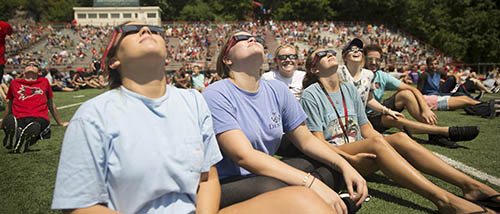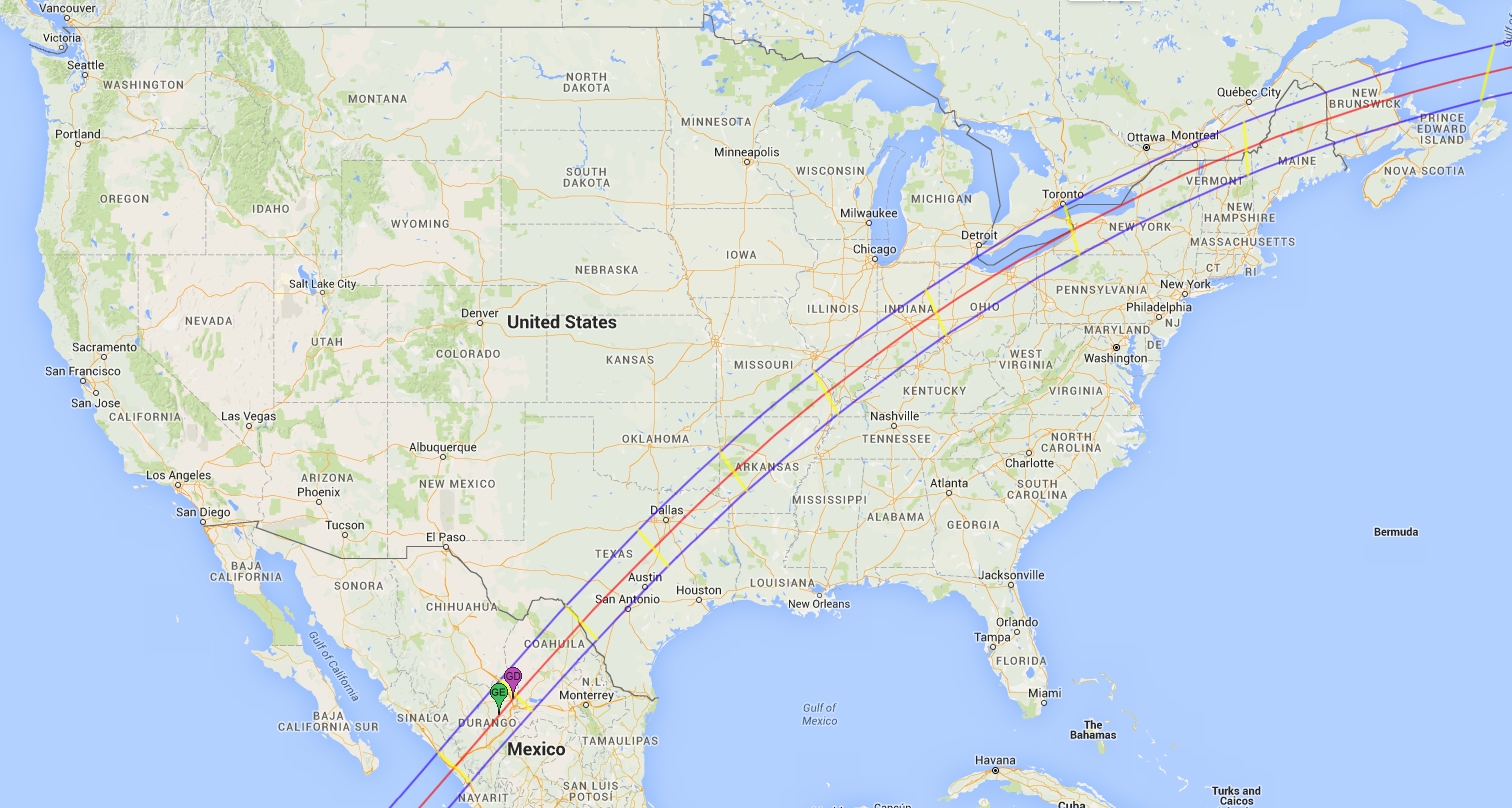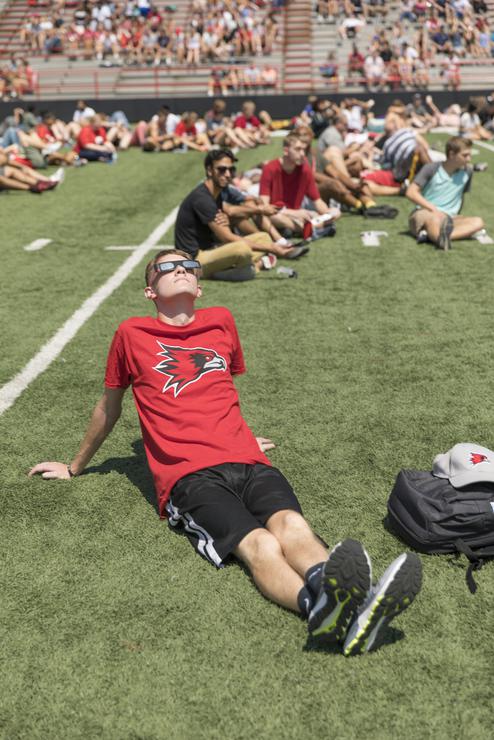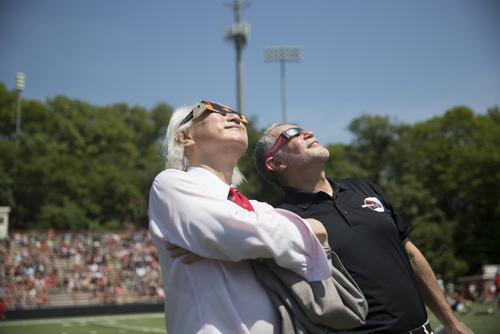Eclipse
Continue to main content
On April 8, 2024, Cape Girardeau was in the path of a total solar eclipse. Totality began at 1:58:15 p.m. and day became night for roughly 4 minutes, 6 seconds.
Thank you, SEMO students, faculty, and staff. We closed out our 150th celebration with a fantastic block party observing the latest total solar eclipse to cross the U.S. from coast to coast. The next won't be for 20 years. We couldn't have done it without you (really).
Here's to the next 150 years!
Did You Know?
- A total solar eclipse is a celestial event where the moon passes between the sun and the earth. The moon completely covers the sun except for the sun’s bright corona.
- The sun’s diameter is about 400 times larger than the moon but is also 400 times farther from Earth. This makes the moon and the sun appear to be the same size.
- Watch the shadows during a solar eclipse. They will look strange - they show the shadow of the moon over the sun.
- During totality, nighttime bugs and animals will become active, daytime birds will stop chirping and come in to roost.
- If there is a breeze, it will stop blowing.
- The temperature may drop anywhere from 10 – 15 degrees Fahrenheit.
Viewing Safety Tips
- Only totality is safe to view with your naked eye. Use special eclipse viewing glasses at all other times.
- If viewing the eclipse through a telescope, use the proper filters.
- Do not use binoculars, sunglasses, smoked glass, or an unfiltered telescope to view a partial eclipse.
- Check out NASA's eclipse safety tips.
Don’t Have Viewing Glasses?
Make a pinhole camera! The strange shapes that show in the shadows of leaves will also show through other gaps where the light gets through. A pinhole camera is a great way to indirectly view a partial eclipse (but don’t look through the pinhole directly at the sun).

Visit With Us
SEclipse August 21, 2017
Eclipse Panel Discussion
On July 21, the Missouri Solar Eclipse Expo kicked off with a panel discussion entitled “Get Ready for the 2023 and 2024 Solar Eclipses”. Panelists include a representative from NASA, eclipse expert Fred Espenak (“Mr. Eclipse”), a representative of the Missouri Department of Tourism, an expert of participation by schools, and a weather expert. The Panel Discussion will be held from 6:30 p.m. – 8 p.m. on SEMO's campus.

